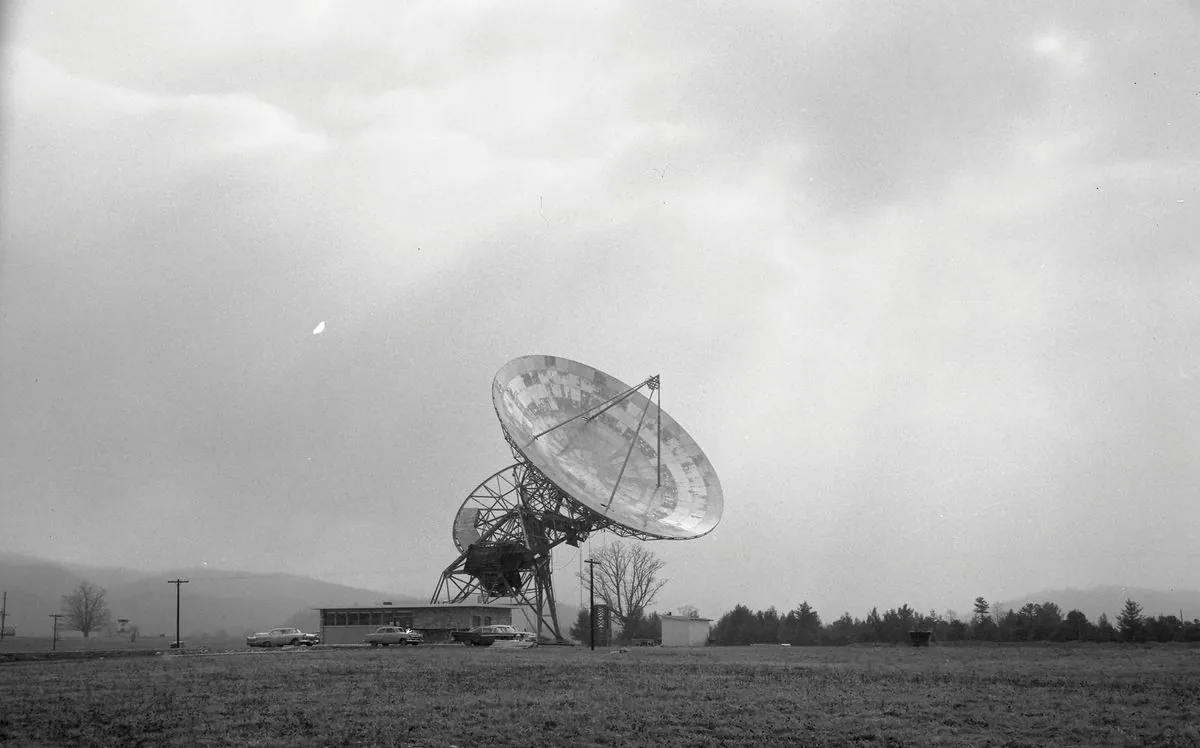One hundred years ago, an unconventional endeavor marked the dawn of humanity's systematic search for extraterrestrial life. In 1924, David Todd, an Amherst College astronomer, orchestrated a groundbreaking attempt to detect signals from Mars, dubbed the "Big Listen."
Todd's project coincided with Mars' closest approach to Earth in centuries, positioning the Red Planet a mere 34 million miles away. This astronomical event provided an ideal opportunity for Todd's ambitious plan. He enlisted the support of the U.S. Army and Navy, along with experts in various fields, to listen for potential Martian communications.
The "Big Listen" involved a coordinated effort to minimize radio interference. Todd requested radio stations worldwide to observe five minutes of silence every hour for three days. While only a handful of stations complied, the U.S. military provided significant support, with radio operators attentively listening for unusual signals.
Charles Francis Jenkins, a pioneer in moving image technology, assisted Todd by developing a method to record radio waves on paper for later analysis. Meanwhile, William F. Friedman, a renowned cryptologist who would later play a crucial role in decoding Japanese military transmissions during World War II, stood ready to decipher any potential alien messages.
Despite these efforts, the project failed to detect any conclusive evidence of extraterrestrial intelligence. Unbeknownst to the team, Earth's atmosphere blocks many of the radio waves they were attempting to intercept. Nevertheless, this endeavor is now recognized as a significant milestone in the search for extraterrestrial life.
The "Big Listen" project emerged during a period of intense fascination with Mars. The planet's reddish hue, visible to the naked eye, and its name, derived from the Roman god of war, had long captured human imagination. In the late 19th and early 20th centuries, astronomical observations of apparent "canals" on Mars' surface (later revealed to be optical illusions) fueled speculation about intelligent life on the planet. This scientific intrigue, combined with popular science fiction works like H.G. Wells' "The War of the Worlds," solidified Mars' place in the public consciousness.
The advent of radio technology, pioneered by inventors like Guglielmo Marconi and Nikola Tesla, further sparked interest in the possibility of interplanetary communication. The first transatlantic radio broadcast in 1901 led to speculation about the potential for extraterrestrial civilizations to possess similar technology.
While interest in Martian life waned in subsequent decades as more was learned about the planet's inhospitable conditions, the search for extraterrestrial intelligence (SETI) continued to evolve. The field of radio astronomy emerged following the discovery of radio waves from space beyond our solar system. Modern SETI efforts, such as the $100 million Breakthrough Listen project, now employ advanced technologies to scan millions of radio channels simultaneously, searching for signs of intelligence far beyond our solar system.
The ongoing quest to detect extraterrestrial life continues to spark debate about potential risks and benefits. Some experts warn of the dangers of actively attempting to communicate with alien civilizations, while others argue that contact could provide valuable knowledge and potentially help humanity overcome existential challenges.
As we reflect on the centennial of Todd's "Big Listen," it's clear that while our methods have become more sophisticated, the fundamental questions driving our search remain unchanged. The possibility of life beyond Earth continues to captivate scientists and the public alike, fueling ongoing efforts to explore the cosmos and unravel the mysteries of our universe.
"This project really kicked off the modern era of the search for extraterrestrial life."
